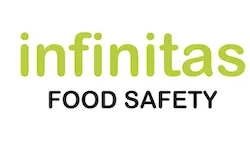Imagine walking into a restaurant, seeing a glowing 5 star hygiene rating sticker. You feel reassured about the cleanliness of the kitchen and the safety of the food. But what if that hygiene rating sticker was fake?
Recent undercover investigations by ITV in Cardiff and BBC in London have exposed a growing scandal. Restaurants, takeaways and retail stores, both in England and Wales have been caught displaying false food hygiene rating stickers to deceive customers. Some businesses use old ratings, while others purchase counterfeit food hygiene stickers online.
This isn’t just a local issue. The Food Standards Agency (FSA) is under pressure, particularly after reports of fake hygiene rating stickers displayed at major supermarkets like Sainsbury’s. With potential changes in how food safety is enforced, it’s more important than ever to ensure that businesses are playing by the rules.
So, how widespread is this problem? And how can customers and businesses protect themselves?
Table of Contents
How False Hygiene Rating Stickers Work
Food hygiene rating stickers are meant to provide a quick and trustworthy snapshot of a restaurant’s cleanliness and food hygiene standards. There are rules for displaying your food hygiene rating sticker depending of the location of your business.
In Wales and Northern Ireland, it is a legal requirement to display them. Whereas in England, and Scotland it is voluntary for now. But some businesses are taking advantage of loopholes by:
🔹Displaying old hygiene rating stickers from a previous inspection before standards dropped.
🔹Using counterfeit hygiene rating stickers bought online to give the illusion of a better rating.
🔹Not displaying a hygiene rating sticker in the hope that customers won’t check the official rating online.
Where Are False Hygiene Rating Stickers Coming From?
Online Marketplaces – Investigations have found fake hygiene rating stickers being sold on eBay, allowing businesses to buy a 5-star rating without earning it.
Websites – A quick search online identified sites selling Food Hygiene Rating stickers.
Dodgy Printing Services – Some unscrupulous suppliers print counterfeit (fake) hygiene rating stickers to order, mimicking the real ones.
Manipulated Digital Copies – With basic graphic design software, it’s easy to create a fake hygiene rating sticker that looks almost identical to the real thing.
Food Hygiene Rating stickers are trademarked by the Food Standards Agency. They are issued by local authority officers after official food hygiene inspections. Other businesses are not permitted to sell these stickers.
Who Are Using False Hygiene Rating Stickers?
Not all cases of fake hygiene rating stickers are deliberate fraud—some businesses genuinely forget to update their sticker after an inspection. But in many cases, there’s intent to deceive.
The Main Offenders:
- Restaurants & Takeaways with a Poor Hygiene Rating
- Some businesses fail their inspection and instead of making improvements, they opt for a shortcut—displaying a hygiene rating sticker that misrepresents their rating.
- A recent 2025 undercover investigation by ITV Wales found that over 150 food businesses across Wales were displaying either an incorrect hygiene rating sticker, or no hygiene rating sticker at all.
- In Dec 2024, KentOnline went to Maidstone to check whether hygiene rating stickers in windows matched those shown online. Of 22 with hygiene ratings 3 or lower, 12 displayed no hygiene rating sticker, 7 displayed the wrong hygiene rating sticker, 2 claimed they were awaiting a reinspection.
- Supermarkets & Chains
- The BBC’s October 2024 investigation found fake hygiene rating stickers being used at Sainsbury’s locations in London, raising concerns about transparency in larger food retailers.
- Business Owners Unaware of the Law
Some businesses may genuinely not realise they need to update their hygiene rating sticker after a new inspection.
What Is The Problem With Displaying a False Food Hygiene Rating Sticker?
🔹Customers are misled into thinking a business meets hygiene standards when it doesn’t.
🔹Trust in the food hygiene rating system (FHRS) is damaged, making it harder for good businesses to stand out.
🔹It is illegal to display a false food hygiene rating sticker.
🔹Public health risks increase, especially in places where serious food safety violations are hidden behind a fake hygiene rating sticker score.
Consequences Of Displaying A False Food Hygiene Rating
Displaying a false food hygiene rating sticker isn’t just morally wrong. If your business is caught displaying a fake hygiene rating, fails to display a rating or obscures a hygiene rating you will be committing a criminal offence. The consequences include:
Fines & Legal Action – Local authorities can prosecute business owners for misleading consumers under Trading Standards & Consumer Protection laws. This could result in a fine. It could also result in the owner being disqualified as a Director.
Public Exposure – Media reports have already named and shamed businesses, damaging their reputation.
Loss of Trust and Customers – Once customers find out a business is being dishonest, they may never return.
The FSA is under increasing pressure to crack down on these scams, especially as they debate whether supermarket hygiene inspections should be handled at a national level by supermarkets themselves rather than by local Environmental Health Officers (EHOs).
This is recently been made worse as large numbers of supermarkets recently fail their food hygiene inspection. With high-profile cases making headlines, tougher enforcement could be coming soon. And mandatory display rules may be introduced across England.
How to Spot & Report a Fake Hygiene Rating Sticker
For consumers, it’s becoming harder to know who to trust. But there are ways to spot a fake rating sticker and report suspicious businesses:
How to Check If a Food Hygiene Rating Sticker Is Fake.
- Look up the rating online – The FSA runs a Food Hygiene Rating Scheme (FHRS) where you can check a business’s actual hygiene rating.
- 🔍 Search here: FSA Food Hygiene Ratings
- If you can’t find a business Hygiene Rating online using the FSA website, or
- If the sticker is different from the rating sticker shown on the FSA website, or
- If the Hygiene Rating sticker is being deliberately obscured, or
- If no Hygiene Rating Sticker is displayed, then
- 🔍 Report it at: FSA Food Hygiene Ratings
- You can report anonymously if you are concerned about backlash.
What This Means for Business Owners
When dishonest business owners display a false hygiene rating sticker this is bad news. Their behaviour undermines the credibility of the system and makes it harder for reputable food businesses to stand out. If you decide to cheat, beware of the consequences.
Why You Should Never Use a Fake Hygiene Rating Sticker
The risk isn’t worth it – If caught, the legal and reputational damage can be irreparable.
You could lose customers – Once a scandal breaks, your regulars may never return.
It will be harder to attract new talent. And current staff may decide to leave.
It’s better to improve your hygiene standards – If your rating isn’t great, fix the issues instead of faking it.
If you need to improve your hygiene rating legitimately, focus on:
🔹Proper cleaning & sanitation practices.
🔹Staff training & food safety management.
🔹Work with an EHO or food safety consultant to fix compliance issues.
Final Thoughts: The Public Deserves Better
Food hygiene ratings exist to protect customers and give them choice. If fake hygiene rating stickers become widespread, trust in the system collapses – and that’s bad for the Government, consumers and honest businesses. It’s bad for customers, as it puts them at risk.
What can you do?
- Check the food hygiene rating before you eat out or shop.
- Report suspicious businesses.
- Demand transparency and higher standards.
💬 What do you think? Would you still eat at your favourite restaurant or takeaway if you found out their hygiene rating was fake?

